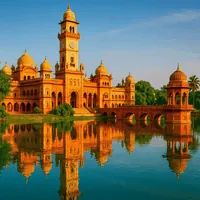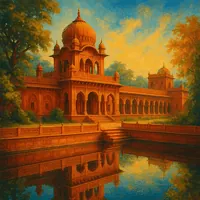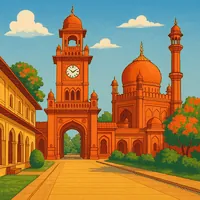Rāmpur, Uttar Pradesh, is uniquely defined by the Raza Library—an Indo-Islamic treasure trove housing over 17,000 rare manuscripts, miniature paintings, and Mughal-era texts, unmatched anywhere else in the world. Founded by Nawab Faizullah Khan in the 18th century, Rāmpur’s legacy as a princely state lives on through its distinct Rampuri cuisine and the legendary Rampuri knife, crafted with regal precision.
Notable points about Rāmpur
- Rampur, Uttar Pradesh is world-renowned for its rare Rampur Raza Library, housing over 17,000 rare manuscripts in Arabic, Persian, Urdu, and Sanskrit—some dating back to the 8th century.
- Unlike many Indian cities, Rampur is steeped in Nawabi culture, with Mughal-era architecture and refined Urdu traditions still shaping daily life.
- The best time to visit is from October to March when the weather is pleasant for exploring heritage sites and attending local festivals.
- Rampur is extremely budget-friendly, offering heritage experiences and authentic cuisine at a fraction of the cost of larger cities like Delhi or Lucknow.
- Attend a live performance of Rampuri Qawwali or Urdu Mushaira at a local cultural club—these poetic gatherings are core to the city’s identity.
- Don’t miss Rampuri Korma and the legendary Rampuri knives (once used by nobles)—head to old town eateries like Mohammadi Hotel for the full experience.
- Auto-rickshaws are plentiful and cheap, but hiring a local guide for a walking tour of the Qila (Rampur Fort) area adds unmatched depth.
- Visit the lesser-known Jama Masjid in Shahabad village nearby—built in 1710, it's older than most Delhi monuments and rarely crowded.
- Most locals speak Urdu and Hindi; while English is limited, the city is welcoming—dress modestly and avoid public displays of affection in conservative areas.
- Watching the sun set behind the domes of Hamid Manzil while sipping chai from a roadside stall is a quiet, unforgettable moment of Rampuri charm.



